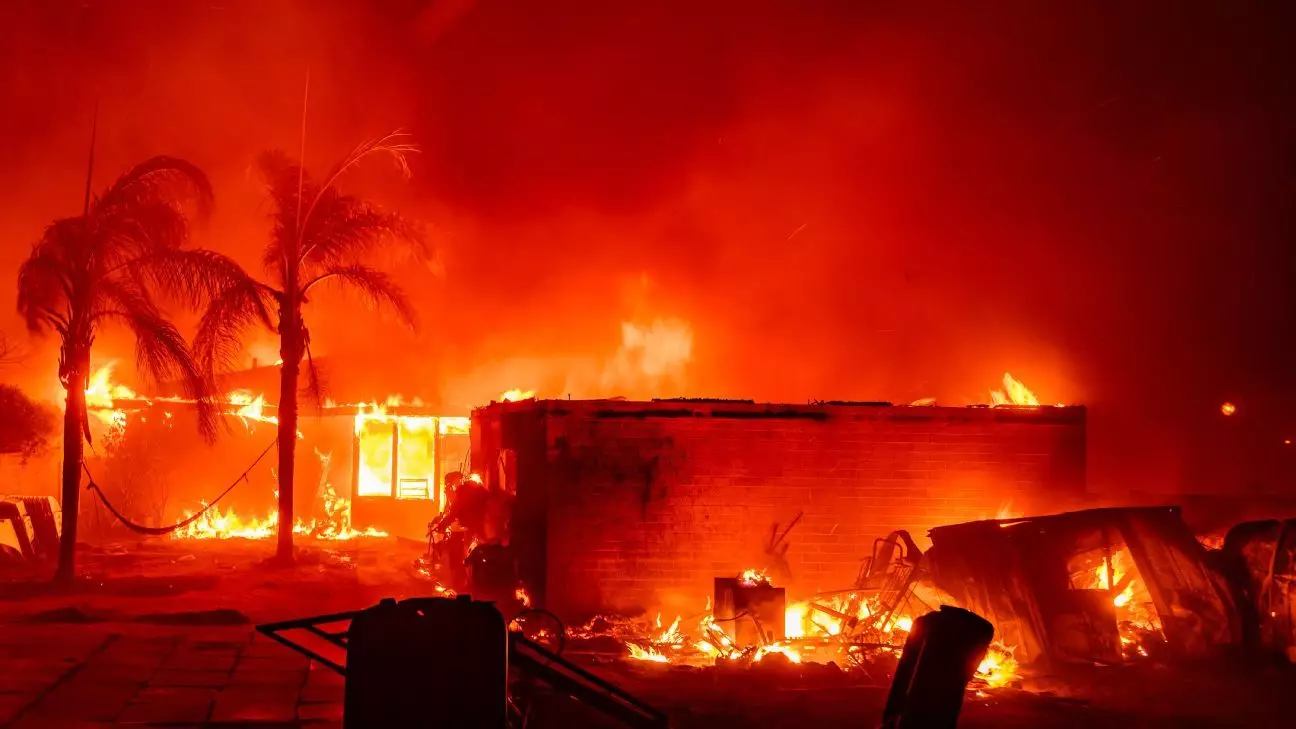As the summer months fade into autumn, California often braces itself for its notorious wildfire season. This year, however, the wildfires have struck earlier and more intensely than anticipated, causing widespread chaos in the Los Angeles area and raising unique challenges for the National Football League (NFL). With air quality deteriorating and thousands fleeing affected regions, the NFL is grappling with the repercussions on the league’s postseason schedule. The wild-card playoff game between the Minnesota Vikings and Los Angeles Rams at SoFi Stadium serves as a poignant case study in the intersection of sports, public safety, and environmental issues.
In light of the ongoing fires, the NFL has developed a contingency plan to ensure the safety of players, staff, and fans. Officials announced that if conditions worsened, they could relocate the crucial playoff game to State Farm Stadium in Glendale, Arizona. Such decisions weigh heavily on league administrators, as they must balance the integrity of the competitive landscape with the humanitarian aspects of the situation. Historically, this is not the first time the NFL has had to adapt due to natural disasters; for instance, a similar move was made back in 2003 when fires forced a Monday night game between the Miami Dolphins and San Diego Chargers to shift venues.
The NFL’s proactive stance demonstrates an awareness of the gravity of the situation. However, this response might also underscore a larger issue: the ever-evolving climate patterns that jeopardize not just sports but entire communities. Current environmental crises bring to light the vulnerability of sporting events in the face of natural disasters, making one question how often similar adaptations will be required in the future.
Impacts on Teams: Health and Safety Concerns
The wildfires are not solely a logistical concern; they directly impact player health and team operations. The air quality in surrounding regions has fluctuated from “unhealthy” to “very unhealthy,” creating an environment where navigating outdoor practice becomes hazardous. The Los Angeles Chargers had to modify their practice schedules to minimize exposure to these adverse conditions, indicating the league’s commitment to prioritizing player safety.
Coaches have shown ingenuity by separating offensive and defensive units during practice, but players still found themselves affected by the deteriorating air quality. Conversations around player health—the long-term effects of poor air quality on athletes—have surged as organizations are forced to ensure safety measures in the midst of competition preparations.
The players themselves are also reflecting on these events from a personal standpoint. Rams wide receiver Cooper Kupp’s heartfelt acknowledgment of the fires illustrates the human side of this sports saga. While the league continues to focus on the logistical and competitive parts of the game, individuals within these organizations are deeply affected, making it imperative to remember that athletes are community members first, and competitors second.
In addition to orchestrating logistical support, NFL teams have been quick to engage in philanthropic efforts to aid those affected by the wildfires. The Chargers announced a generous donation of $200,000 to various organizations, including the American Red Cross and the LA Fire Department Foundation. Such initiatives reflect a commitment not just to the immediate community but also to long-standing values that permeate sports cultures—benevolence, charity, and support.
Yet, one cannot help but ponder the true impact of these responses. While financial aid is essential, it also beckons questions about systemic accountability and environmental stewardship. The conversation moves from immediate relief to long-term sustainability; how can organizations, including the NFL, cultivate a proactive approach that aligns sports and ecological responsibility? Would more enduring investments in community resilience initiatives substantially alter the landscape for the future?
The current wildfire crisis in Los Angeles illuminates critical intersections of environmental realities and athletic performance. As citizens rally to combat wildfires, the NFL and its teams serve as a barometer for how sports can emphasize community and resilience amid adversity. This situation acts as a clarion call for not only immediate action but also long-term strategies aimed at addressing underlying issues contributing to climate change and natural disasters.
Moving beyond the short-term adaptations, the league has an opportunity to herald an era where sports organizations prioritize sustainability quietly behind the scenes and on the public stage. Ultimately, how the NFL and its teams navigate this unfolding crisis may serve as a vital precursor for sports leagues worldwide, underscoring that the spirit of competition extends beyond the field—impacting lives, communities, and our planet as a whole.

